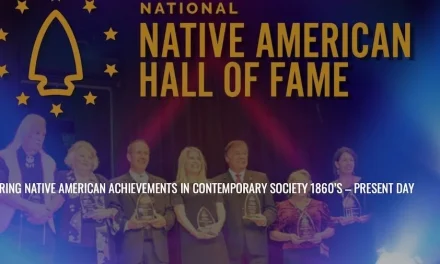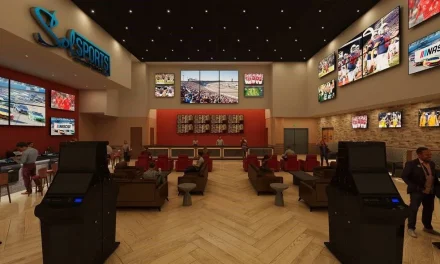 According to Robert Gauthier, longtime former director of the Salish & Kootenai Housing Authority and current administrative director of Northwest regional tribal housing group UNAHA (United Native American Housing Association), the start of the high rate of homeownership on the res can be directly attributed to the tribe starting a Tribal Credit department many decades ago. Originally for agricultural loans, the tribe added a mortgage focus to it at least sixty years ago.More recent elements of housing success include the tribe compacting its own land record office, eliminating a bottleneck at the Bureau of Indian Affairs, chartering successful tribal business initiatives to create jobs so tribal members can afford mortgages, and chartering its own bank which specializes in the HUD 184 guaranteed Indian mortgage loan from the federal Department of Housing and Urban Development.
According to Robert Gauthier, longtime former director of the Salish & Kootenai Housing Authority and current administrative director of Northwest regional tribal housing group UNAHA (United Native American Housing Association), the start of the high rate of homeownership on the res can be directly attributed to the tribe starting a Tribal Credit department many decades ago. Originally for agricultural loans, the tribe added a mortgage focus to it at least sixty years ago.More recent elements of housing success include the tribe compacting its own land record office, eliminating a bottleneck at the Bureau of Indian Affairs, chartering successful tribal business initiatives to create jobs so tribal members can afford mortgages, and chartering its own bank which specializes in the HUD 184 guaranteed Indian mortgage loan from the federal Department of Housing and Urban Development.
“We may have the highest homeownership for Indian tribes in the country,” said Gauthier, thanks to “a series of things tribal leaders did.” He also noted that in the many years he ran the housing authority, he never experienced political interference from tribal leaders.
The tribe has engaged vigorously in economic development that provides jobs for tribal members. It started a successful electronics unit that spun off an even more successful technology unit (to the tune of $300-$400 million in sales a year). It took over the operation of the Kerr Dam at Flathead Lake, generating another $30 million. It started a college. And it started a hotel and casino, KwaTakNuk, at the south end of the lake. Employees of the tribe jumped from 60 or 80 to 1,000, Gauthier said.Another savvy move was to establish a strict court system. This is a “no nonsense respected court” with foreclosure and eviction protocols judges are not shy about enforcing, he said.
“It is a good story for other tribes,” says Gauthier. “The success is not due to efforts by anybody but the tribe and their understanding of sovereignty and taking responsibility for running a credit program with integrity, running a court system with integrity, a stable tribal government, and self governance. We have our own title plant. We started our own bank in 2006.”
(That is Eagle Bank of Polson, which at the end of the second quarter of 2018 had $68.7 million in assets and a portfolio of $26.4 million in real estate loans according to the Federal Deposit Insurance Corp.)Having the full partnership of tribal government “impacts affordable housing in a big way,” said Gauthier. “Our tribe for years had expected tribal members who were employed to go to Tribal Credit and buy their own house. The HUD (rental) program was reserved for elders and very low-income families. We were lucky to have a tribe and a reservation you can do that in.” “Those folks that started in the 1940s getting mortgage money,” noted Jason Adams, the current director of the housing authority, meant that “when the housing authority was established in 1963 there was a whole generation of people who were already homeowners,” he said at a recent meeting of the Center for Indian Country Development, a unit of the Minneapolis Federal Reserve. Adams is the current chairman of UNAHA.The Land Department at Salish & Kootenai is a striking example of tribal housing sovereignty. The tribe “compacted” (basically the same as contracted) with the BIA to run a land title and records shop on the reservation, sidestepping a notoriously slow BIA bureaucracy that could hold up Native mortgages for months and even years.The head of the land office “has 35 staff in her department. We are a compact tribe,” said Adams. “We have 1.5 BIA employees on our res, a superintendent and a halftime secretary. All of the other staff and functions are included in the land title records office. We compacted that in the 1990s.”“If I need a land title report, I can get it in fifteen minutes,” said Gauthier. “At other tribes it takes six months, a year. This really lends itself to homeownership on trust land. We have an attorney dedicated to title work. Title issues are not a problem at Flathead.”Adams noted the housing authority actively recruits new homeowners from a group of tenants at about 500 rental units it manages through HUD housing assistance money. It has run for many years a homebuyer education program with NeighborWorks of Montana for those who can make the jump from Mutual Help (the HUD program) over to Tribal Credit or to a HUD 184 mortgage.
“Those folks that started in the 1940s getting mortgage money,” noted Jason Adams, the current director of the housing authority, meant that “when the housing authority was established in 1963 there was a whole generation of people who were already homeowners,” he said at a recent meeting of the Center for Indian Country Development, a unit of the Minneapolis Federal Reserve. Adams is the current chairman of UNAHA.The Land Department at Salish & Kootenai is a striking example of tribal housing sovereignty. The tribe “compacted” (basically the same as contracted) with the BIA to run a land title and records shop on the reservation, sidestepping a notoriously slow BIA bureaucracy that could hold up Native mortgages for months and even years.The head of the land office “has 35 staff in her department. We are a compact tribe,” said Adams. “We have 1.5 BIA employees on our res, a superintendent and a halftime secretary. All of the other staff and functions are included in the land title records office. We compacted that in the 1990s.”“If I need a land title report, I can get it in fifteen minutes,” said Gauthier. “At other tribes it takes six months, a year. This really lends itself to homeownership on trust land. We have an attorney dedicated to title work. Title issues are not a problem at Flathead.”Adams noted the housing authority actively recruits new homeowners from a group of tenants at about 500 rental units it manages through HUD housing assistance money. It has run for many years a homebuyer education program with NeighborWorks of Montana for those who can make the jump from Mutual Help (the HUD program) over to Tribal Credit or to a HUD 184 mortgage.
“We watch our tenants,” said Adams. “When they start paying the ceiling rent we send them a letter, saying it looks like they can become a homeowner.”
He shared that about 150 families have gone through the housing authority’s homebuyer education program and received mortgages in the past five years, out of about 250 families that take the class in a year.There are two main sources of finance: Tribal Credit, which has 700 to 800 mortgages in its portfolio, he said, and three local banks that use the HUD 184 program: the tribally owned Eagle Bank, Glacier Bank, which a few years ago acquired another local bank active in the HUD 184 program, Ronan State Bank, and Valley Bank, Adams said.In addition, there is a trailer park in the reservation with about 40 trailers and some of those may be owned by the occupants as well, probably through Tribal Credit or off-reservation dealers. Mobile home finance is considered to be home loans if the housing is anchored to a slab. If you can drive the trailer off the lot, it is not considered a mortgage by federal agency Fannie Mae.With its extensive homeowning culture and other successful business ventures, the Salish & Kootenai are an example of tribes not counting on gaming to ensure its economic wellbeing.“Our tribe realizes the future is not in casinos,” said Gauthier. “In Montana we only have Class II gambling with bingo and electronics. No table games, no card games.”But their model may not be able to be duplicated at every tribe. He told the CICD meeting in Minneapolis, “Every tribe changes at the pace they need to. We have to have solutions for each tribe. One solution doesn’t work.”









